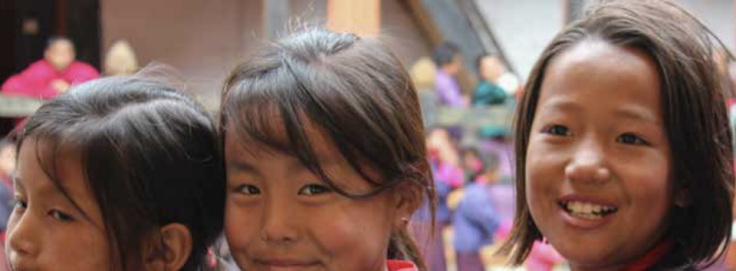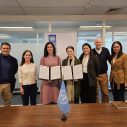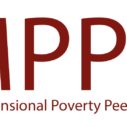
Search
Bhutan Multidimensional Poverty Index 2022

Moderate Multidimensional Poverty: Motivation and Structure
It is common for poverty measures to be adjusted every decade or so. Hence the 2022 BLSS, published 10 years from the first BLSS-based MPI, offers an opportunity to design a Moderate MPI that better reflects the aspirations of Bhutanese people and the government. A new report presents the Moderate MPI for Bhutan.
Built on extensive consultations over several years with policy and civil society actors, as well as technical exercises with planners and statisticians in Bhutan, the Moderate MPI takes a large step forward. Ambitions of equity are reflected, for example in gendered indicators of education.
Bhutan’s interest in digital inclusion is evident in requirements such as technological assets and internet access. The prominent national priority of water means that water must be piped into the dwelling, it therefore has been assigned a higher weight (than it had in the original MPI) and enters the health domain alongside access to health care. A cross-cutting commitment to high standards of service is evident in requirements such as private flush toilets, electricity supplies without major interruptions, and access to tarred roads. Indicators such as land and livestock are also updated to reflect current standards.
Thus, Bhutan’s new Moderate MPI raises the bar considerably in order to accurately reflect the aspirations of the present generations of both citizens and policy actors. The Moderate MPI will thus be updated and now used as the official national MPI of Bhutan throughout the coming decade.
Chapter 5 of this report presents trends from 2017–2022 in the original, acute MPI which identified 5.8% of Bhutanese as poor in 2017. These comparative trends provide transparency and completeness, so that readers know how the original MPI changed in the intervening five years. Results show strong and significant and pro-poor reductions nationally (from 5.8% to 2.1%) and by key groups – urban and rural areas, children and adults, and Dzongkhags.
Moderate MPI: Level and Composition
In 2022, the moderate multidimensional poverty rate, or incidence, is estimated at 17.8% of the population. The intensity of deprivation, which is the average deprivation score across all poor persons, is 42.8%.
The MPI, which is the product of the incidence of poor people and the intensity of poverty, has a value of 0.076. This indicates that poor people in Bhutan experience 7.6% of the deprivations that would be experienced if all people were deprived in all indicators. The urban poverty rate is 8.2%, while rural poverty stands at 23.9% – and 61.4% of Bhutanese poor live in rural areas. In terms of the percentage contribution of each of the 14 indicators of the Moderate MPI to overall poverty, the largest contributors to national poverty are deprivations in access to health (18.0%), followed by water and school attendance (15.7%) and female years of schooling (15.3%). When aggregating by dimensions, the largest contributor is the education dimension (45.0%). Even though the indicators of the dimensions of living standards and health were changed to reflect higher aspirations for the population, they still contribute 21.3% and 33.6% respectively to overall poverty.
Moderate MPI across Dzongkhags
Across Dzongkhags, there is only a partial ranking due to overlapping confidence intervals. What is clear is that Samtse appears to be the poorest and is certainly poorer than 13 other Dzongkhags. Paro and Thimphu are less poor than 14 other Dzongkhags. Considering the poverty level together with population is very important. Samtse houses the largest number of multidimensionally poor (17.7%) followed by Thimphu (8.5%) and Chhukha (8.4%). Gasa (1.0%) has the lowest share of poor people in Bhutan.
Moderate MPI Among Children and Across Social Groups
Across age cohorts, multidimensional poverty is highest for children with 20.7% of all children living in poverty. Children aged 10–17 years are the poorest age group, of whom nearly 25% are poor. These findings show that children aged 10–17 years are especially vulnerable – a common pattern in other countries – highlighting the need to analyse child poverty further and invest explicitly in its reduction.
When comparing households whose head is male with those where the head is female, there is no difference in the level of multidimensional poverty. As expected, the educational level and literacy status of the household head play an important role. The higher the level of educational attainment of the household head, the lower the poverty rate. Across households of different sizes, there is not much variation in the level of poverty.
Moderate MPI and Monetary Poverty
This report found that MPI complements the measure of monetary poverty. 12.4% of Bhutanese are monetary poor according to the 2022 BLSS dataset, and 17.8% are MPI poor by the Moderate MPI. So, one might assume that all monetary poor people are also MPI poor. However, that is not the case. Only 4.7% of Bhutanese were both monetary poor and multidimensionally poor in the 2022 BLSS. So were there only one poverty measure, many persons’ difficult material conditions would be overlooked.
The report also sorted people who were MPI poor by monetary quintile. It is expected that those who are MPI poor would be in the poorest 20% or at least the poorest 40% of the population, but again there is a mismatch, and 31.3% of those who are MPI poor are not among the poorest 40% in monetary terms.
Source: Bhutan MPI 2022
















